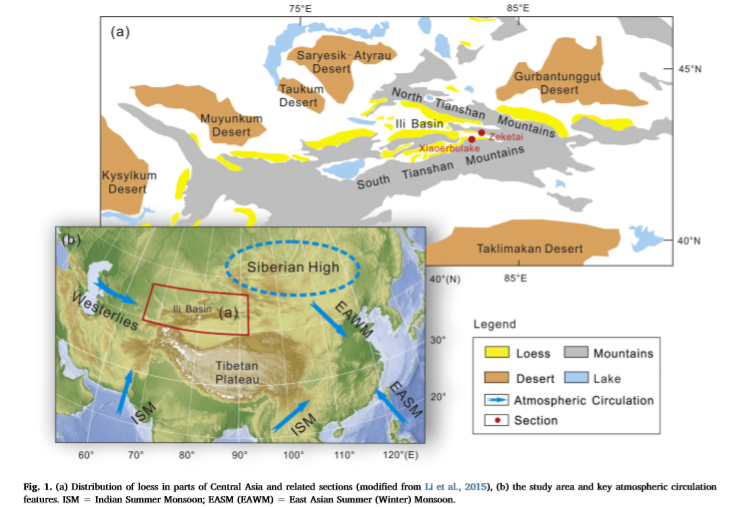Heavy mineral assemblages and sedimentation rates of eastern Central Asian loess: Paleoenvironmental implications
Clicks:853
|
DOI
|
|
|
Key words
|
eastern central asian,loess, heavy mineral
|
|
Related data
|
Central Asian loess deposits record the evolution of aridi?cation across the Asian interior. However, paleoclimatic proxies are strongly influenced by the variation of the dust source and accumulation process. In order to decipher the paleoenvironmental changes, a sensitive paleoclimatic proxy with clear source and accumulation process will be needed. In this study, heavy mineral assemblages and sedimentation rates were investigated in a 30 kyr loess section in the IliBasin,Xinjiang,northwestern China.During Marine Isotope Stage(MIS)2,trendsin dust sedimentation rate were similar to those of the Chinese Loess Plateau (CLP), in anti-phase with Northern Hemisphere Summer Insolation (NHSI) at 65°N. Amphibole/epidote ratios (contents and mean grain size) were low during cold phases, such as the lateLast Glacial Maximum(LGM) and Heinrich Event(H)1; their ratios were higher during adjacent warm periods; this was attributed to aeolian sorting during transportation. Namely, greater sorting between amphibole and epidote occurred in warmer phases, and weaker sorting occurred in colder phases. The amphibole/epidote ratio could serve as a proxy for wind intensity, and thus the Siberian High (SH) intensity. Amphibole/epidote ratio was a more appropriate proxy to record wind intensity than dust sedimentation rate which was also influenced by sediment availability. A higher amphibole/epidote ratio corresponded to a more negative East Asian stalagmite δ18O, indicating an anti-phase relationship between the SH and East Asian Summer Monsoon (EASM) during the MIS 2.
|
|
Data description
|
a. Description of Intellectual Property Rights When using a dataset, please refer to the following documents in the article:
Cheng, L., Song, Y.G., Chang, H., Li, Y., Orozbaev, R., Zeng, M., Liu, H., 2020. Heavy mineral assemblages and sedimentation rates of eastern Central Asian loess: Paleoenvironmental implications. Palaeogeography, Palaeoclimatology, Palaeoecology 551, 109747. https://doi.org/10.1016/j.palaeo.2020.109747
b. The data labels refer to the following specifications: Data sources refer to the following specifications:
East Asian Paleoenvironmental Science Database (http://paleodata.ieecas.cn/index.aspx),National Earth System Science Data Center, National Science & Technology Infrastructure of China (http://www.geodata.cn).
Acknowledgments refer to the following specifications:
Acknowledgement for the data support from “East Asian Paleoenvironmental Science Database (http://paleodata.ieecas.cn/index.aspx),National Earth System Science Data Center, National Science & Technology Infrastructure of China. (http://www.geodata.cn)”.
c. Contacts Name:
Cheng, L., Song Yougui et al. & Data processing group
Company: Institute of Earth Environment, Chinese Academy of Sciences
Tel: 029-62336213
Email: eapsd@ieecas.cn
|
|
Dataset format
|
EXCEL
|
|
Data type
|
Aerosol and Environment/Aerosol and Environment/Aerosol and Environment
|
|
Data sources
|
authors supply
|
|
Enclosure
|
[download]
|
|
Related pictures
|

|
 Contact card Contact card |
 |
Name:Dr. Hongli Zhao |
E-mail:zhaohl@ieecas.cn |
| Company:IEECAS |
Telephone:029-62336213 |